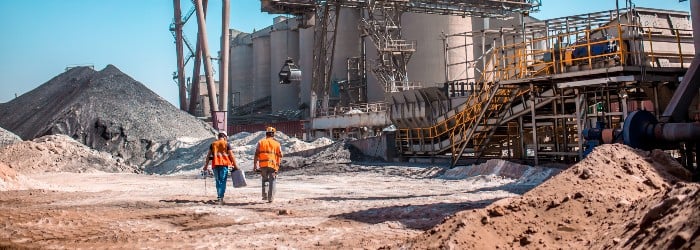Wherever they operate, mining companies that undertake proactive human rights due diligence, even in ‘low-risk’ jurisdictions, will better navigate emerging political and regulatory volatilities and create market value.
For many mining companies, the path to meeting good practice standards and keeping pace with change is more fraught than ever. As the push for deregulation and faster permitting increases, challenges abound, ranging from U.S. tariffs and legal requirements to the EU Omnibus Simplification Bill on due diligence and reporting; from international mining standards to conformance deadlines for tailings management; from changes in U.S. protections against child and forced labor to growing reporting requirements for modern slavery in supply chains. The global mining industry is in a period of rapid transformation. As companies tread their way through complex external developments and shifting regulatory landscapes, the lens of human rights provides a strategic way to navigate uncertainty.
To manage this, human rights can no longer be viewed simply as a regulatory liability or a compliance burden. Leading companies see the opportunity to seize the value of robust human rights due diligence to reduce risk, create value, safeguard economic return, and maintain social license to operate in a rapidly shifting world.

The adoption of the United Nations’ Guiding Principles on Business and Human Rights (UNGPs) in 2011 enshrined the importance of taking a risk-based approach to social and human rights due diligence. Today, a range of developments are prompting companies to adapt to new risks and revisit assumptions – notably perceptions that certain operating environments are ‘low risk’. On their own, each of these developments would be significant; together they present mining companies with a vast array of challenges and opportunities.
Since January 2025, the future of the U.S.-Mexico-Canada (USMCA) Agreement, including Article 23 on labor rights, has been thrown into question by tariffs and subsequent legal challenges to those tariffs. Concurrently, some U.S. states are retreating from long-established child labor protections while continuing the use of prison labor. These developments expose mining companies and/or their value chains to heightened human rights risks in what had been considered predictable operating environments. U.S. Department of Labor investigations into child labor in electric vehicle supply chains have also left key suppliers of critical minerals in this so-called low-risk jurisdiction exposed. Meanwhile, investor demands for human rights due diligence continue to grow. In some cases, requests for Equator Principles 4 human rights impact assessments are required as a pre-condition for financing, helping in part to fill the growing void left by federal and state deregulation.
In February 2025, the European Commission released its proposal to streamline and simplify corporate sustainability rules. The EU Omnibus package introduced significant changes to the scope, timelines, and other compliance aspects of the Corporate Sustainability Reporting Directive (CSRD) and the Corporate Sustainability Due Diligence Directive (CSDDD). If the Omnibus Simplification Bill is approved by the European Parliament and Council and transposed into national law, human rights due diligence and reporting requirements will apply to fewer companies. For those companies that must comply, the implication is they will have more time to report and fewer data points to report on, and they will not be required to assess indirect suppliers or conduct assessments as frequently (ultimately resulting in weaker enforcement mechanisms). However, they must still conduct in-depth assessments of indirect suppliers when plausible information of harm exists, which could affect many mining companies given their prevalence across the supply chains of multiple sectors.
This attempt at simplification has met with substantial criticism by some mining sector stakeholders and has brought into question the predictability and risk-awareness of the EU as a supposedly stable operating environment. However, even if a mining company doesn’t meet the new applicability thresholds (1,000+ employees and EUR450m+ turnover in the EU), it could still be a direct supplier to companies that do (for example, car manufacturers that rely on metals and critical minerals), and it could be using the extended timelines to best prepare for the incoming regulations.

Since the pioneering California Transparency in Supply Chains Act of 2012 was adopted, other jurisdictions have created their own legislation requiring companies to report on efforts to address child and forced labor in their operations and supply chains. The Modern Slavery Acts of the UK (2015), Australia (2018) and Canada (2023), together with the 2021 Norwegian Transparency Act, have significantly increased public disclosure requirements and expectations. While disclosure quality has been questioned, companies are under increased pressure to transparently account for potential impacts and mitigating actions in their operations and supply chains.
In addition, the passage of legislation like the 2021 US Uyghur Forced Labor Prevention Act (UFLPA) and the 2024 EU Forced Labor Regulation require companies to improve traceability in their value chains and demonstrate provenance of key high-risk materials.
Companies with a reactive approach, or who leave regulatory alignment to internal legal teams increasingly struggle to meet expectations. Meanwhile, leading mining companies are using reporting requirements as an opportunity to improve efficiency and manage risks. This includes opportunities to: break down internal silos between sustainability, legal, procurement, risk, and communications functions; enhance their supply chain mapping, risk management and engagement; and consolidate reporting. Companies are also undertaking improvements in key areas common across regulatory requirements such as strengthening risk identification processes, complaints and remedy frameworks in preparation for meeting more robust human rights requirements.
Many mining companies are finalizing efforts to conform to the Global Industry Standard on Tailings Management (GISTM) by the agreed deadline of August 2025. While GISTM was adopted in 2020, there was little initial update or integration of Principle 1 of the standard - to respect the rights of project-affected people in accordance with the UNGPs. Yet as the deadline approaches, several companies are combining their human rights impact assessments with the development of integrated knowledge bases as required by GISTM Principle 2. This smart consolidation maximizes reporting efficiencies and resources while minimizing stakeholder engagement, duplication and assessment fatigue.
Many mining companies have adapted and incorporated the UNGPs and the OECD Guidelines on Responsible Business Conduct into their own internal standards, management systems, and due diligence in high-risk jurisdictions. Now they are turning their attention to medium- and low-risk jurisdictions such as Australia, Canada, and the U.S.
This shift is creating new challenges and opportunities for regional and site-level teams that have not previously had to embed human rights into their operations beyond domestic compliance with priorities such as unionization or anti-discrimination legislation. Some companies might experience complacent or even hostile attitudes towards human rights integration from their site colleagues. Others are building on hard lessons learned from their colleagues operating in more challenging operating contexts, by replicating and adapting approaches to their own specific environments.
Industry standards
Across the industry, standards and stakeholder expectations have never been higher. Following the rollout of the Initiative for Responsible Mining Assurance (IRMA) Standard 1.0 in 2018, extensive public consultation is currently being conducted to update it and release Standard 2.0 in 2025.
Additionally, the Consolidated Mining Standard Initiative (CMSI) commenced in 2023 to bring together ICMM’s Mining Principles, World Gold Council’s Responsible Gold Mining Principles (RGMPs), the Mining Association of Canada’s Towards Sustainable Mining (TSM), and Copper Mark, into one global standard. An extensive public consultation on the first draft concluded in March 2025.
Central to both initiatives is the application of human rights due diligence across all member sites, and in both public consultation processes, public input on human rights and social issues was far greater than anticipated. Many sites in low-risk jurisdictions are not yet ready to meet even the foundational expectations of these new requirements, and preparing these sites will be crucial for companies to comply.

Mining companies can take practical steps in reducing risks and creating value in a shifting environment, even in ‘low-risk’ jurisdictions:
- Talk to each other: Break down departmental silos and establish an interdepartmental working group to address human rights, including key teams such as sustainability, procurement, human resources, legal, compliance, risk, environment, health and safety, and communications, as well as connecting site teams from different jurisdictions to share lessons learned.
- Move beyond regulatory compliance: While legal functions remain critical, meaningfully addressing risk in line with regulatory requirements requires development of a systematic approach to risk identification and management that includes a range of business functions. Taking a risk-based approach also helps prioritize limited resources and mitigates time lost to reactive responses to requirements and incidents.
- Start with one or two issues and scale-up: Tackling one or two topics to begin with, such as modern slavery reporting or tailings management conformance, can give companies a chance to establish teams and approaches that can then be replicated and adapted to cover broader human rights issues. Addressing gaps like digitizing supplier management processes, codifying decent work requirements into human resources procedures, and establishing frameworks to address adverse impacts, will bring benefits to other areas such as GHG scope 3 emissions calculations across value chains; workforce recruitment, retention, and recognition; and community engagement, relations, and acceptance.
- Adopt, adapt, and lead: Once the relevant regulatory requirements and stakeholder expectations have been reviewed, prepare to adopt the most stringent of these while also adapting to contextual specificities and finding efficiencies. Examples here abound:
- Combine multiple modern slavery reports into one global disclosure that addresses all requirements.
- Prohibit the use of prison labor or employment of children under the age of 18 across all contractors and suppliers.
- Coordinate stakeholder engagement activities across social, environment, human rights, tailings, and other assessments where appropriate.
- Lead by providing your teams in low-risk jurisdictions with the knowledge, skills, and ambition to align with emerging standards.
Embedding human rights due diligence into core operations is no longer just a matter of regulatory alignment – it is a strategic imperative for reducing risk and enhancing resilience in an unpredictable world. ERM’s global team of specialists helps companies cut through complexity by identifying and prioritizing the most material risks to people and business alike. By integrating human rights, supply chain, and compliance experience with deep sectoral insight, we enable organizations to move beyond reactive compliance toward proactive risk mitigation and measurable value creation. We support your teams in turning risk into opportunity – especially in jurisdictions often overlooked due to perceived stability.




